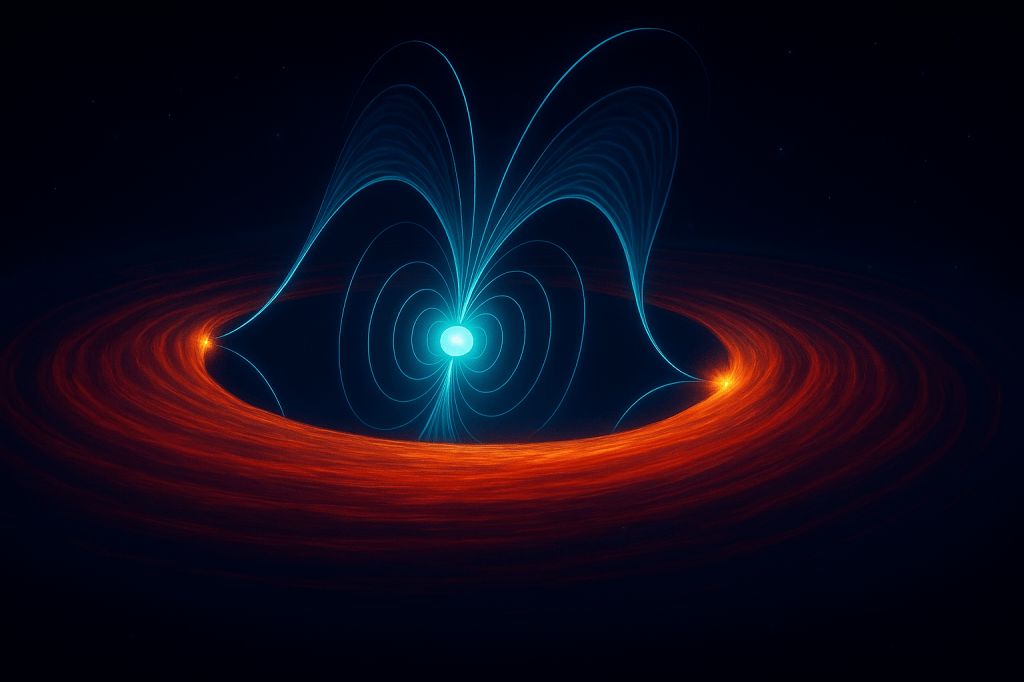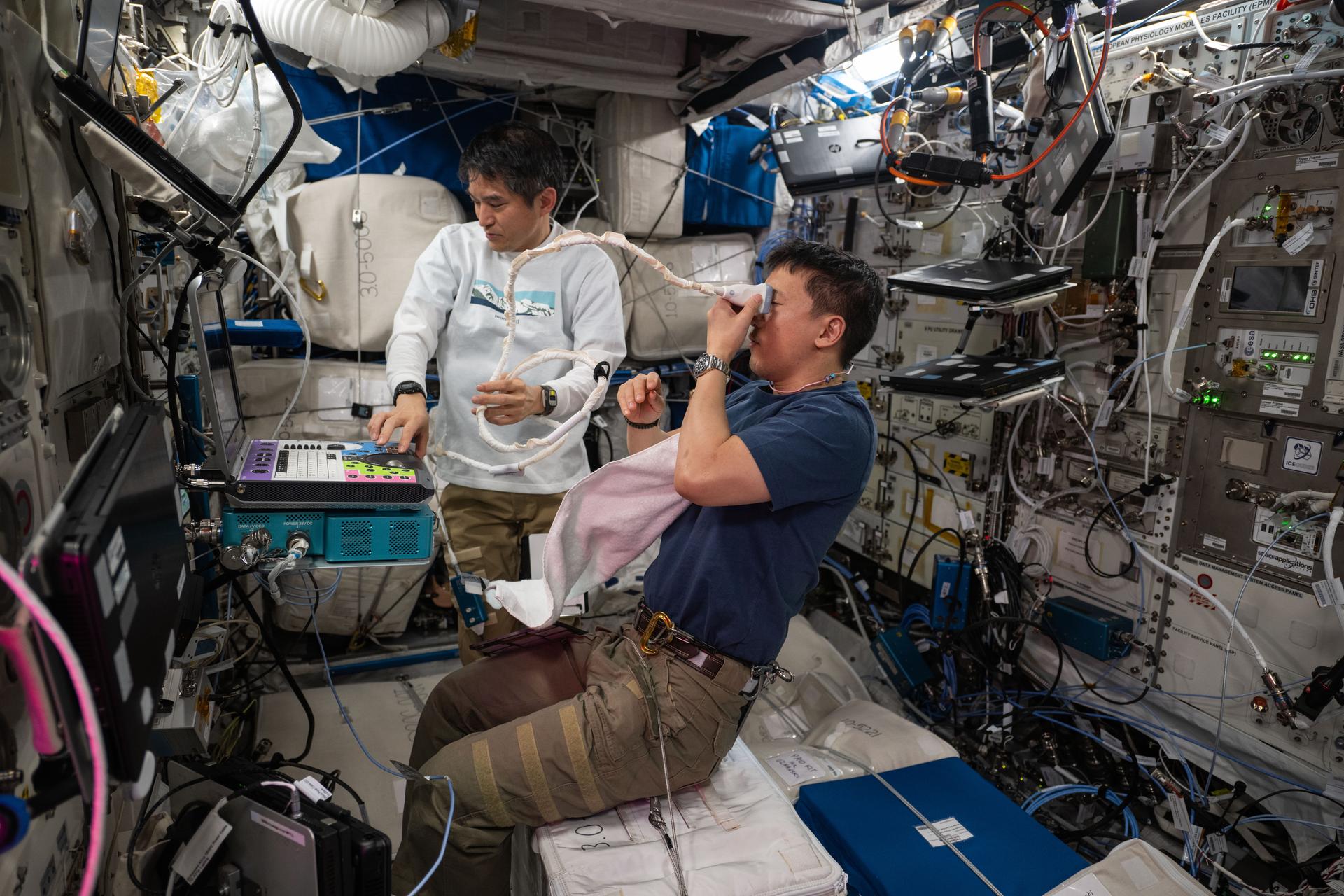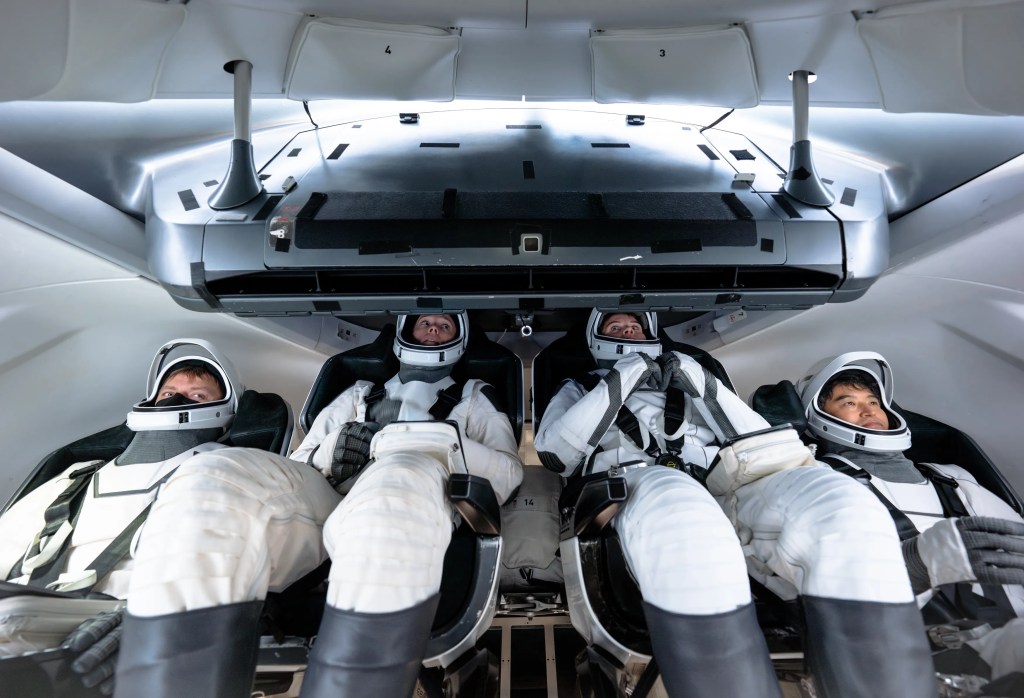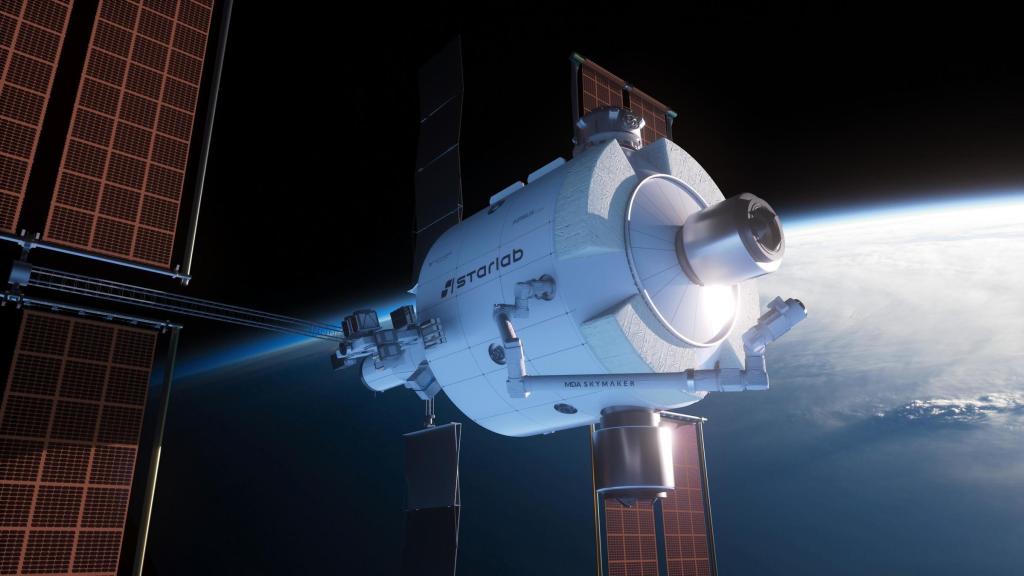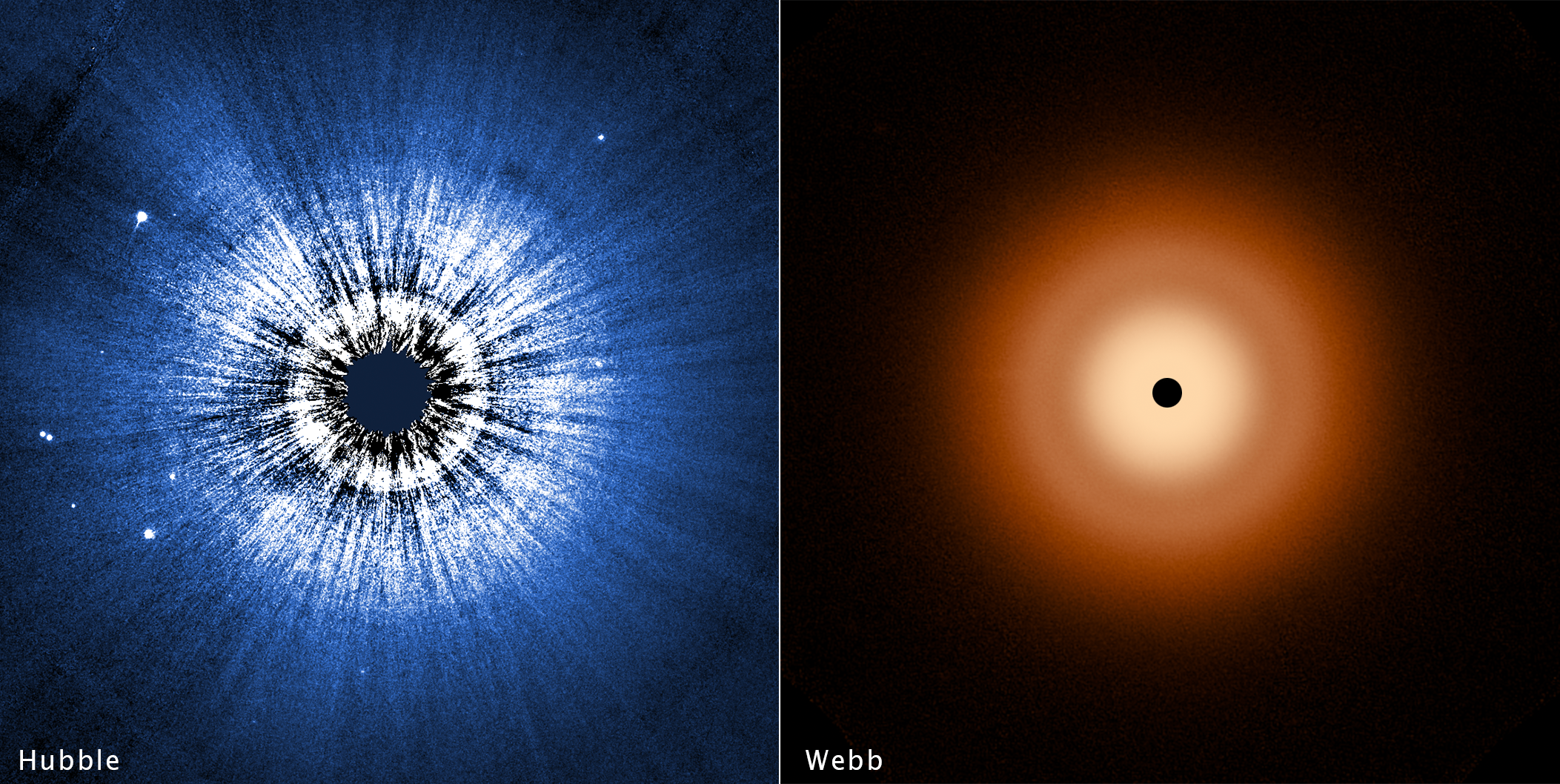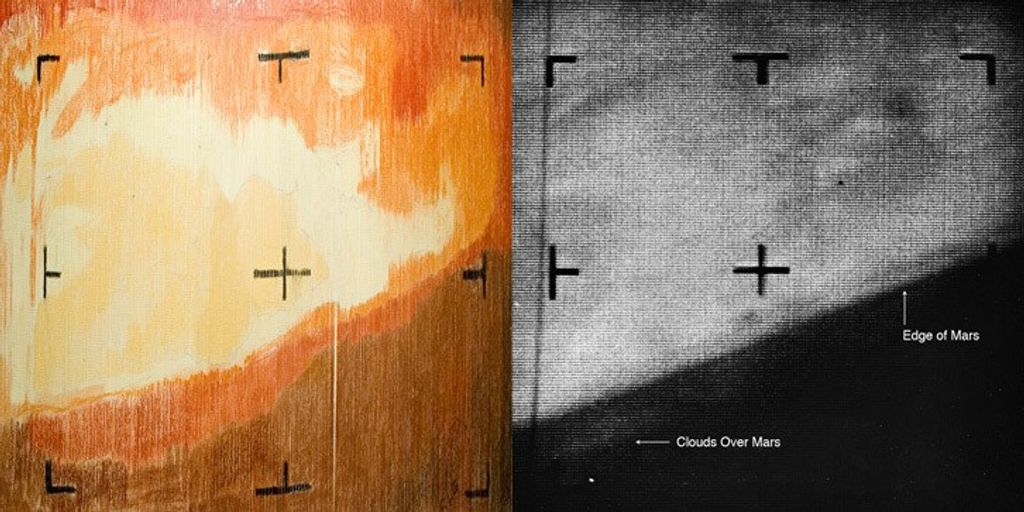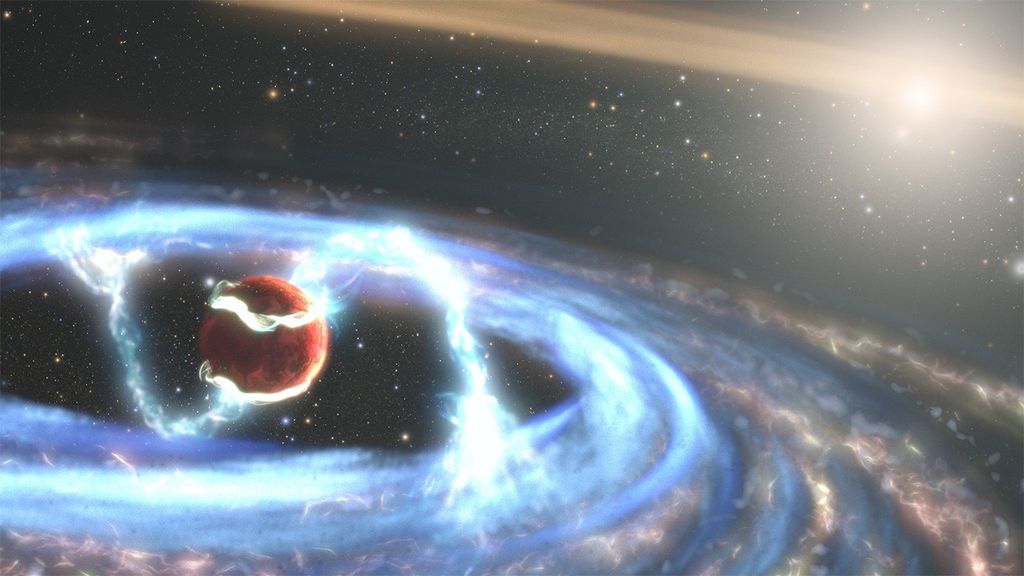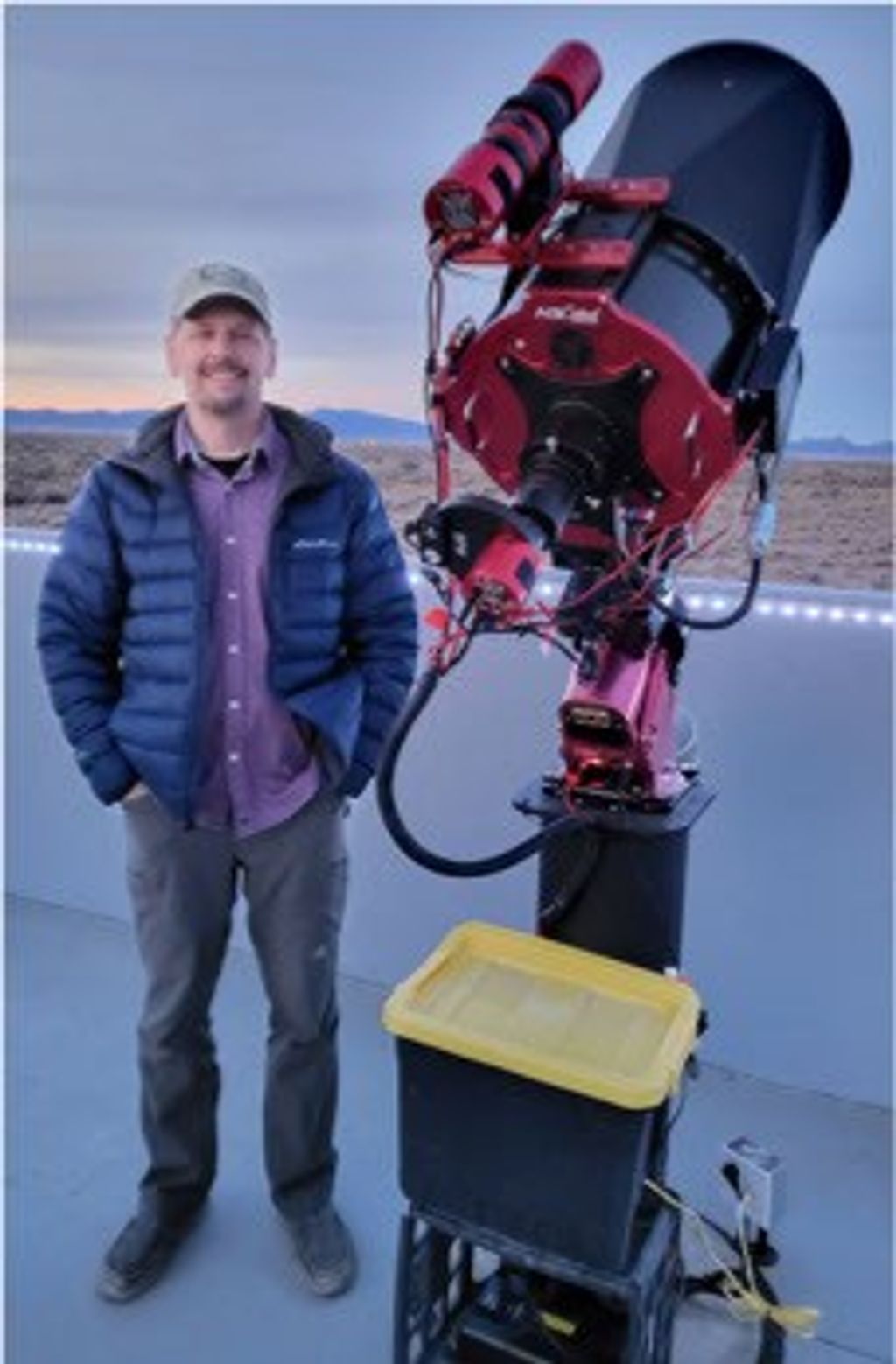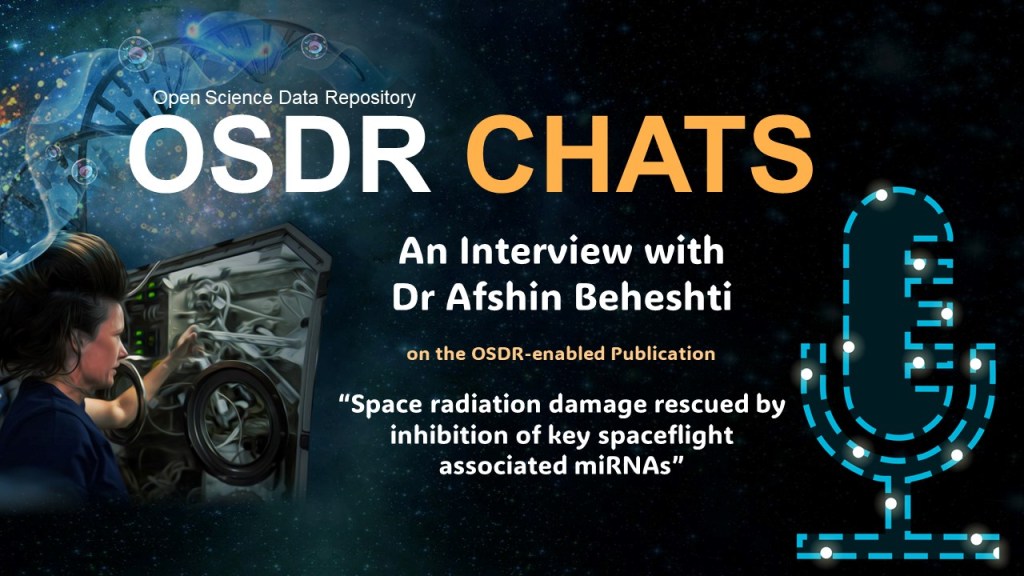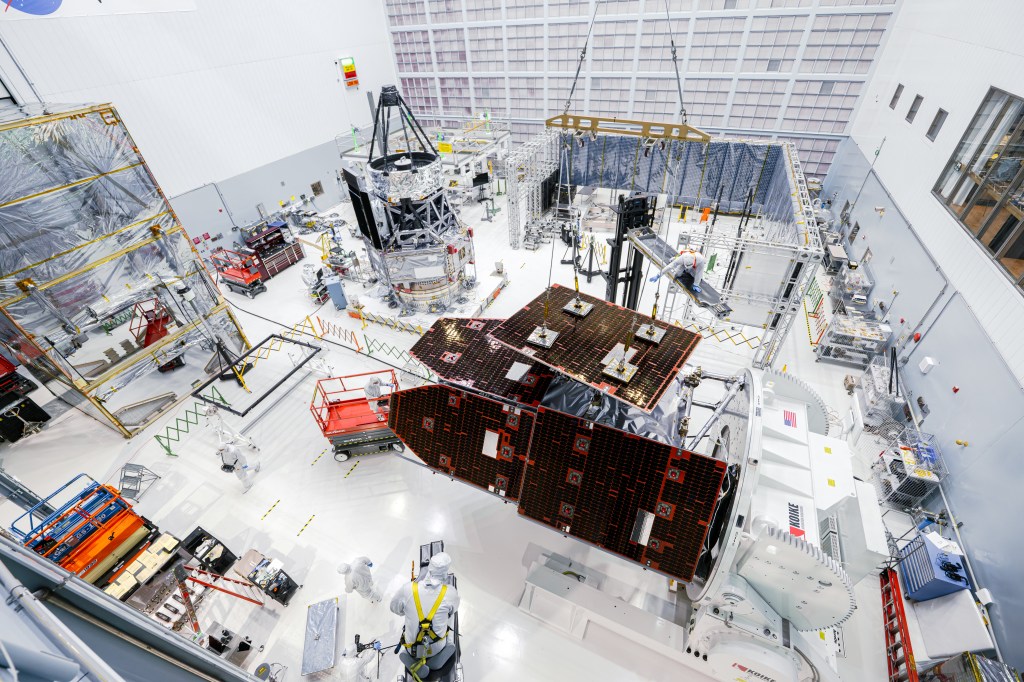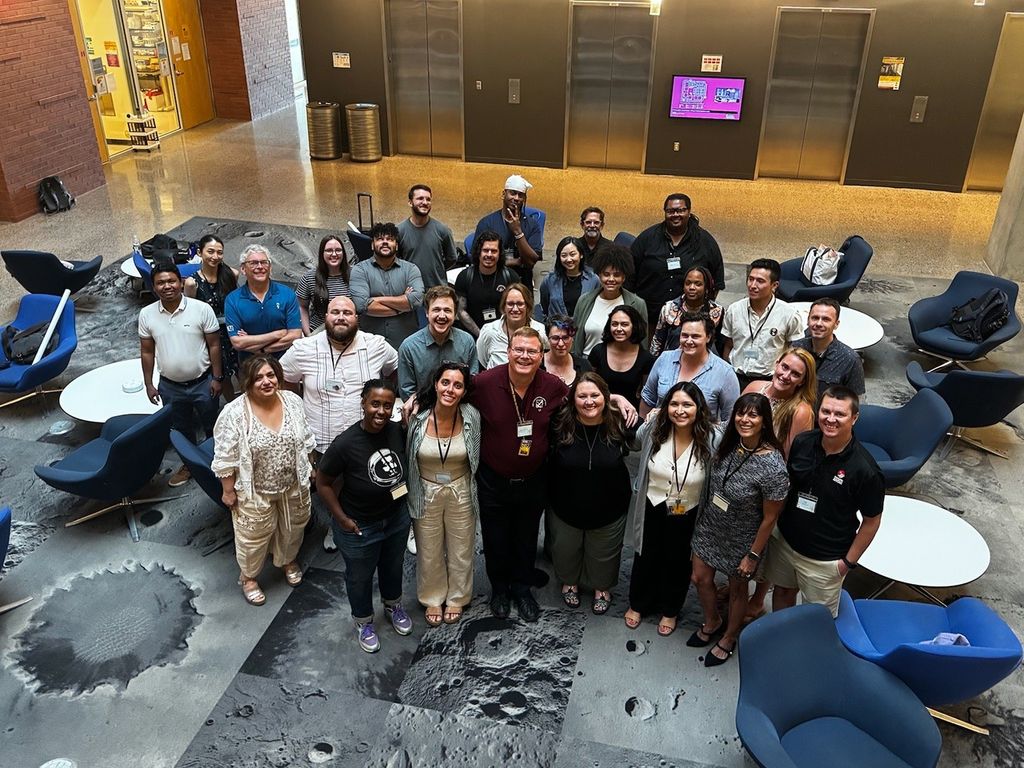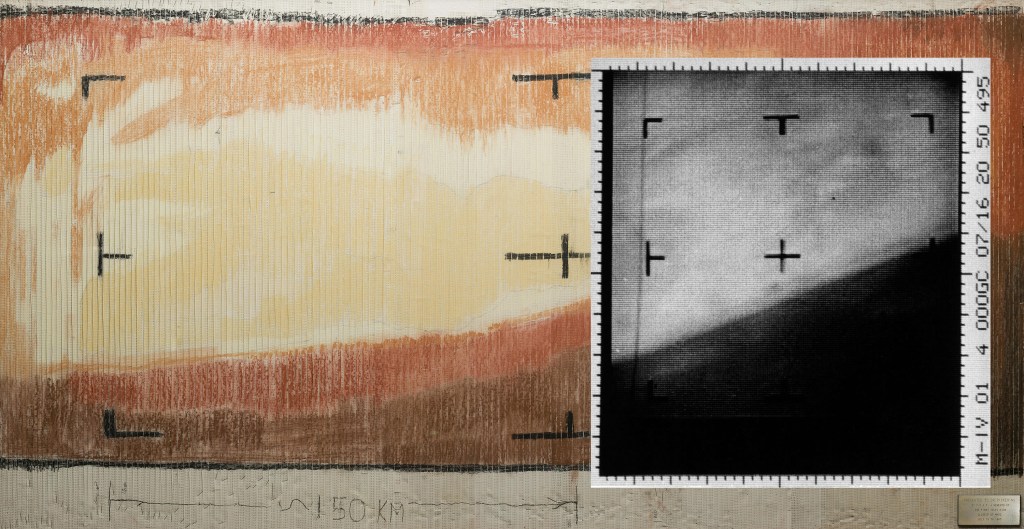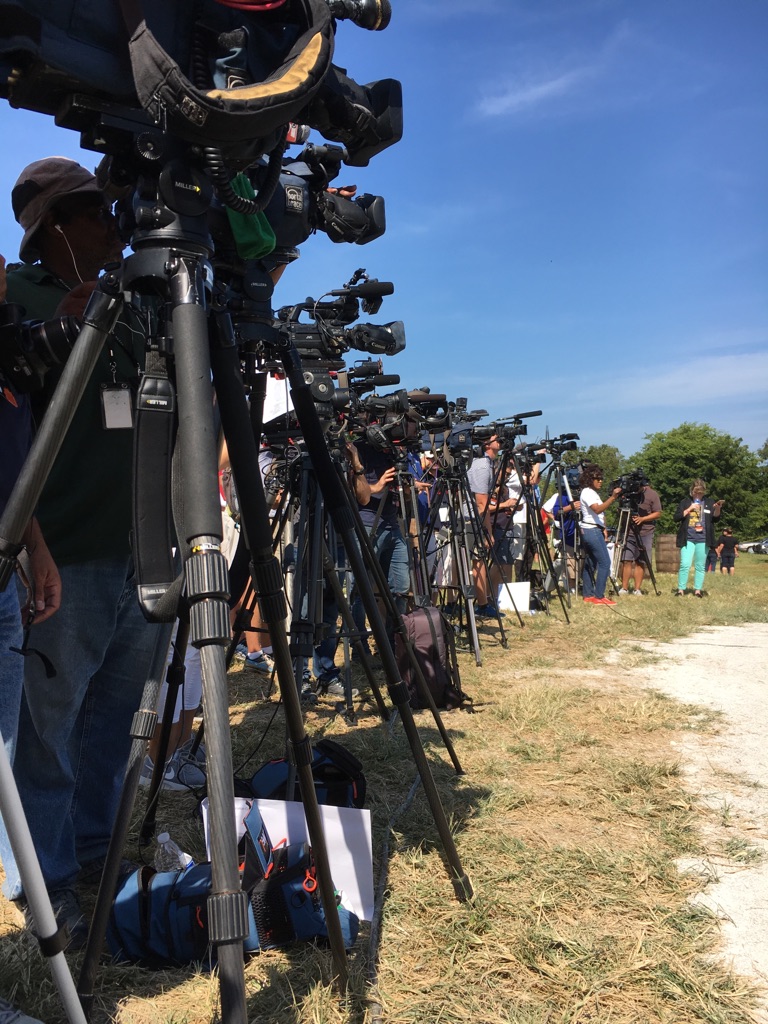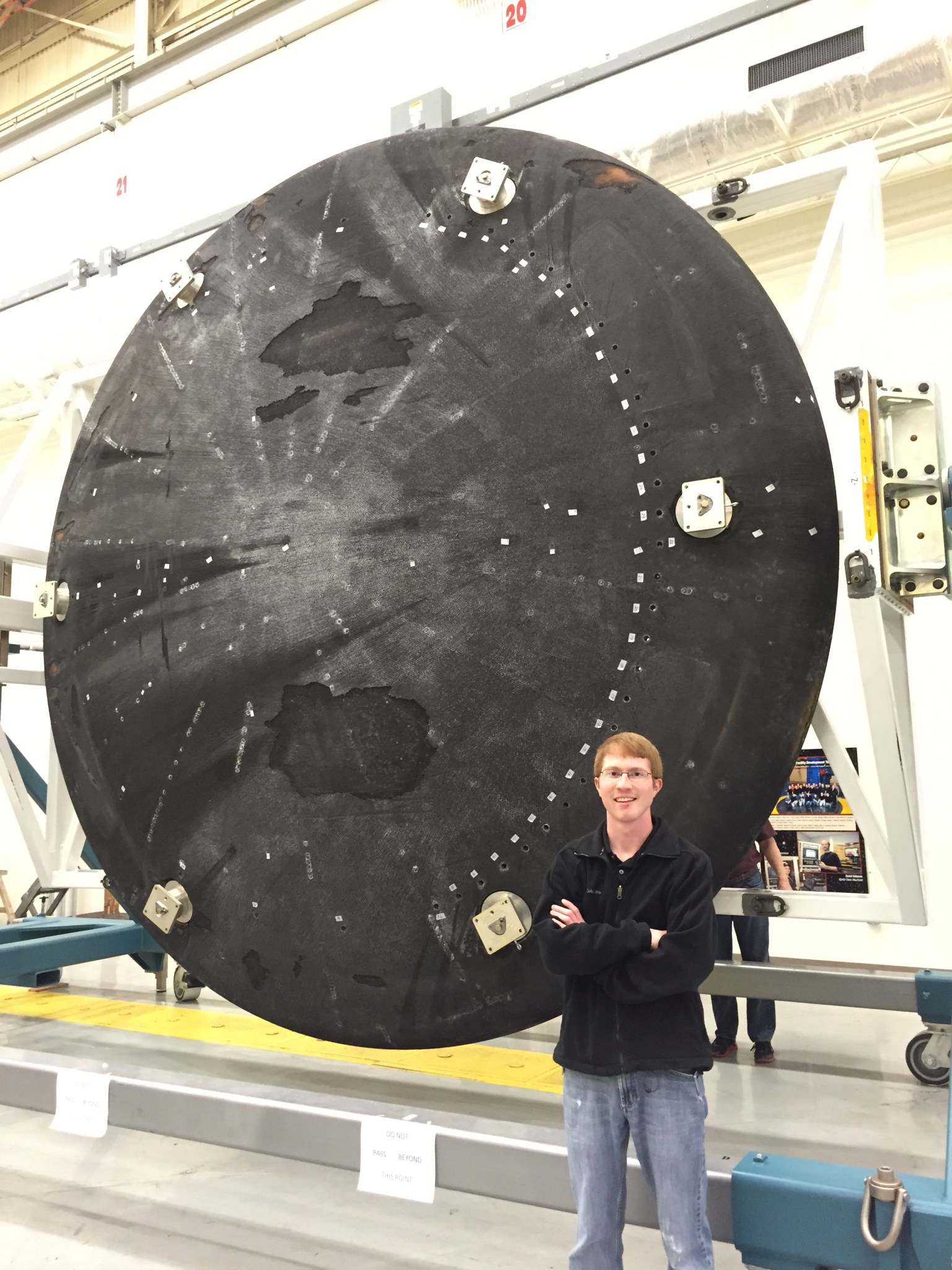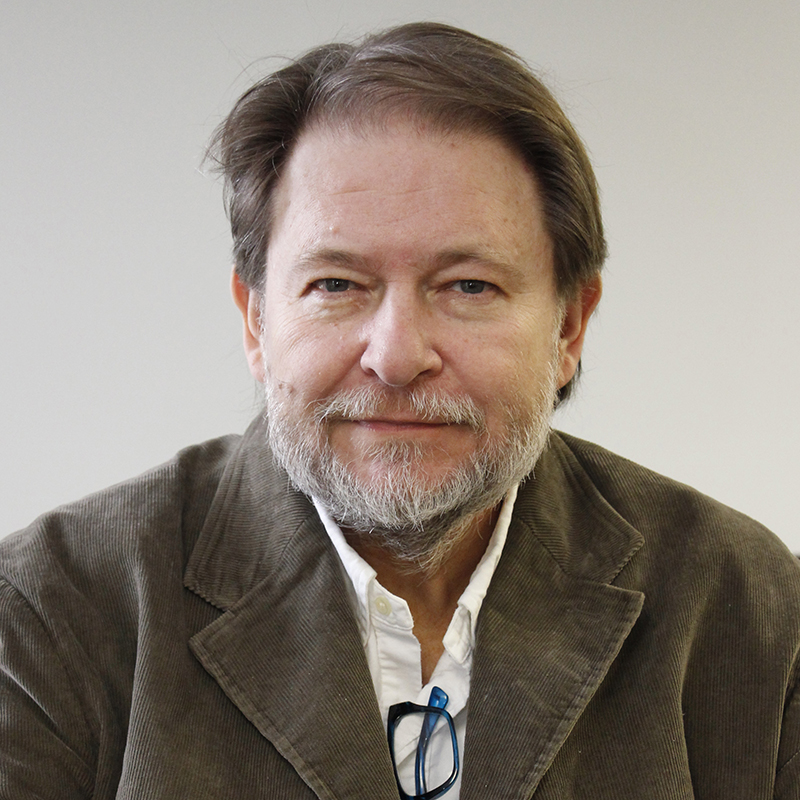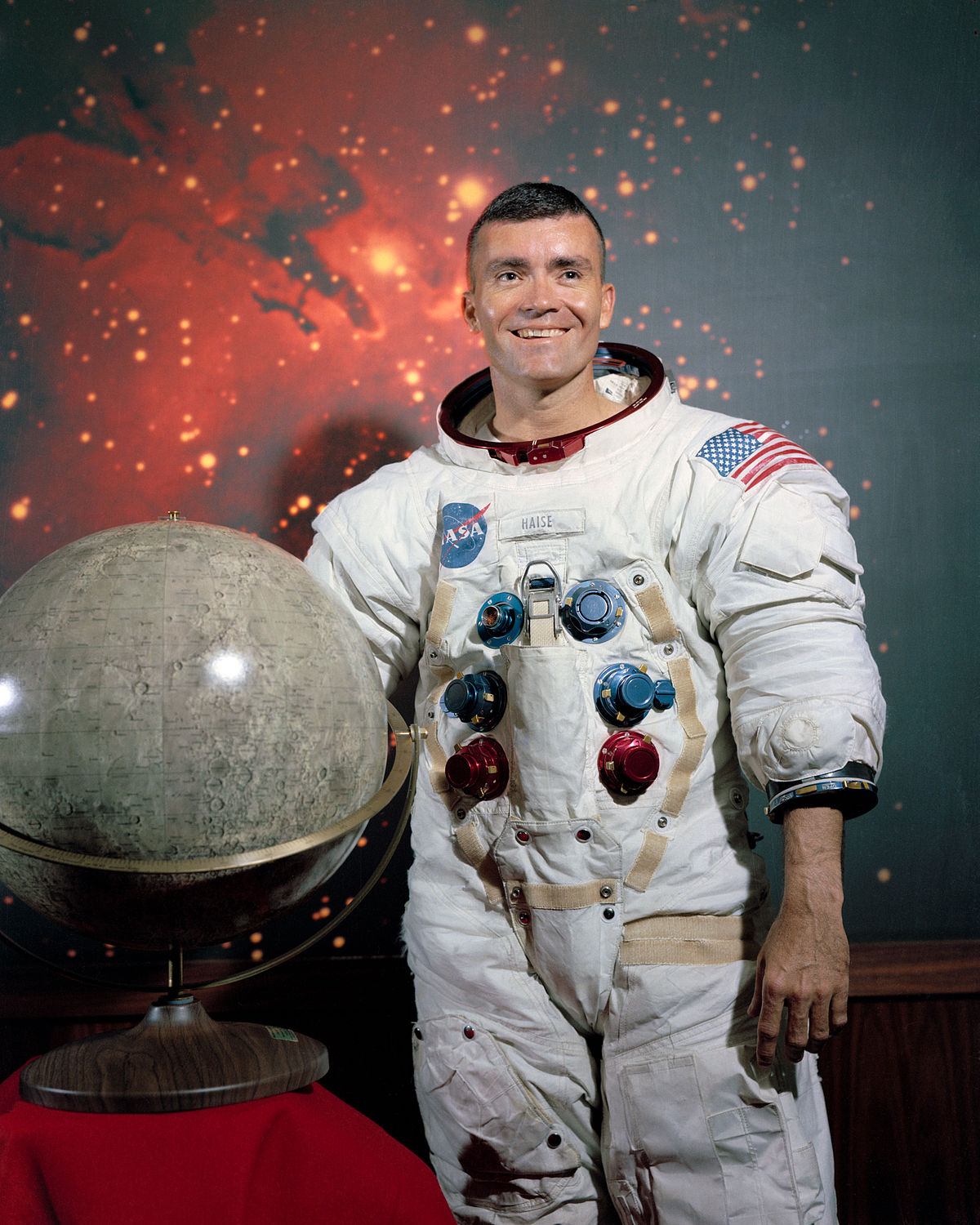In This Week’s Star
- NASA, Nation Watch in Awe, Delight as Eclipse Crosses America Aug. 21
- Space Station Crew Discusses Life in Space with NASA’s New Class of Astronauts
- SHIIVER Tank Arrives at Marshall for Spray-On Foam Insulation
- Marshall Engineer Tal Wammen Awarded Fulbright Scholarship
- Safety Week 2017: Reporting Our Concerns is ‘Everyone’s Obligation’
- Apollo 13 Lunar Module Pilot Fred Haise to Speak at Marshall Sept. 28
- Marshall Retirees Association Encourages Retiring Employees to Join
- This Week in NASA History: STS-105 Lands – Aug. 22, 2001
- Obituaries
NASA, Nation Watch in Awe, Delight as Eclipse Crosses America Aug. 21
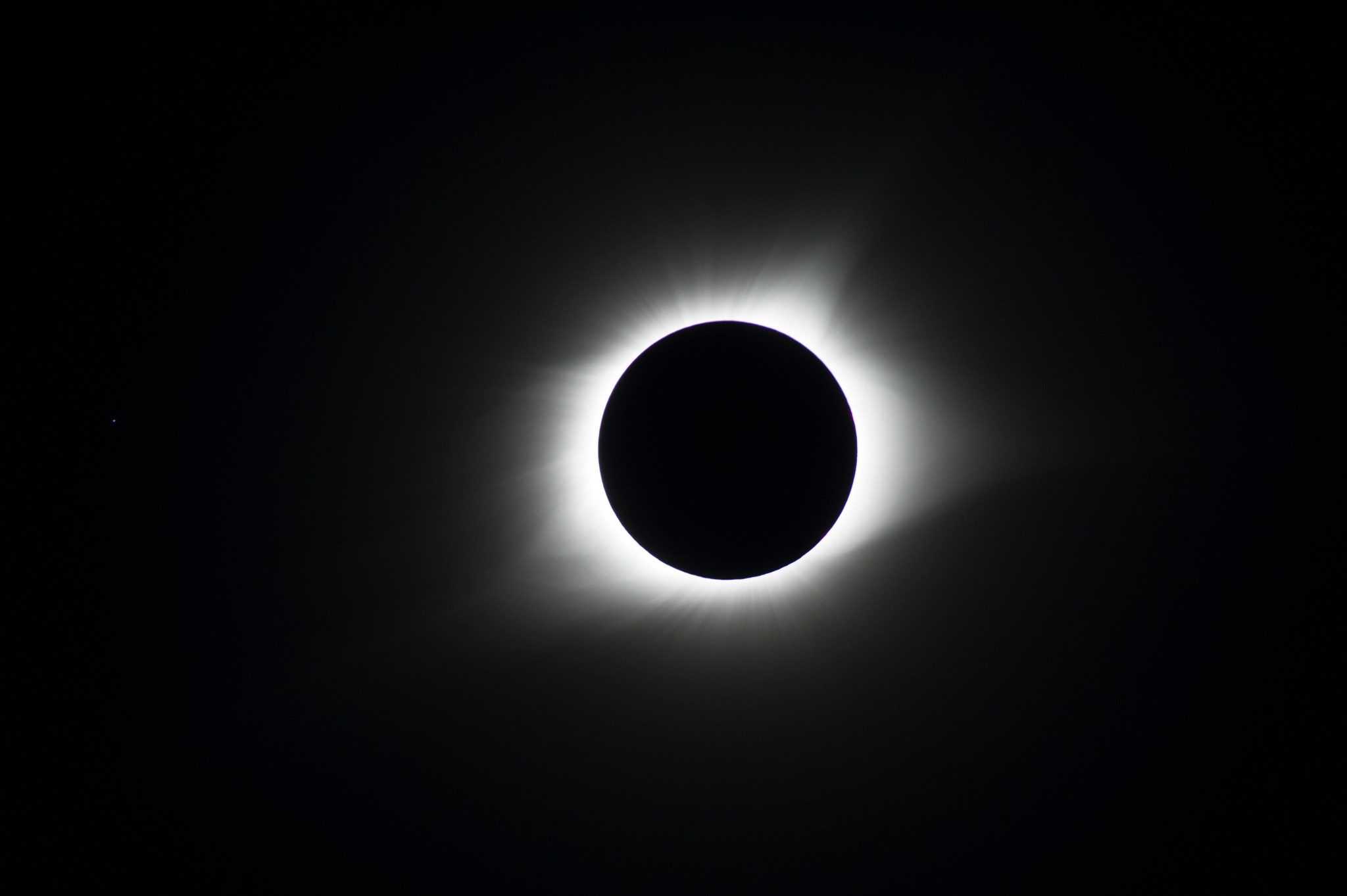
NASA researchers nationwide, along with Americans from coast to coast, looked to the sky Aug. 21 to observe a rare total solar eclipse over the continental United States — photographed here by Joe Matus, an Exploration Systems Development Branch engineer at NASA’s Marshall Space Flight Center. Matus captured this image during the total solar eclipse near Hopkinsville, Kentucky, the point of greatest eclipse, where Marshall team members took part in live NASA coverage of the scientific phenomenon. (NASA/MSFC/Joseph Matus)
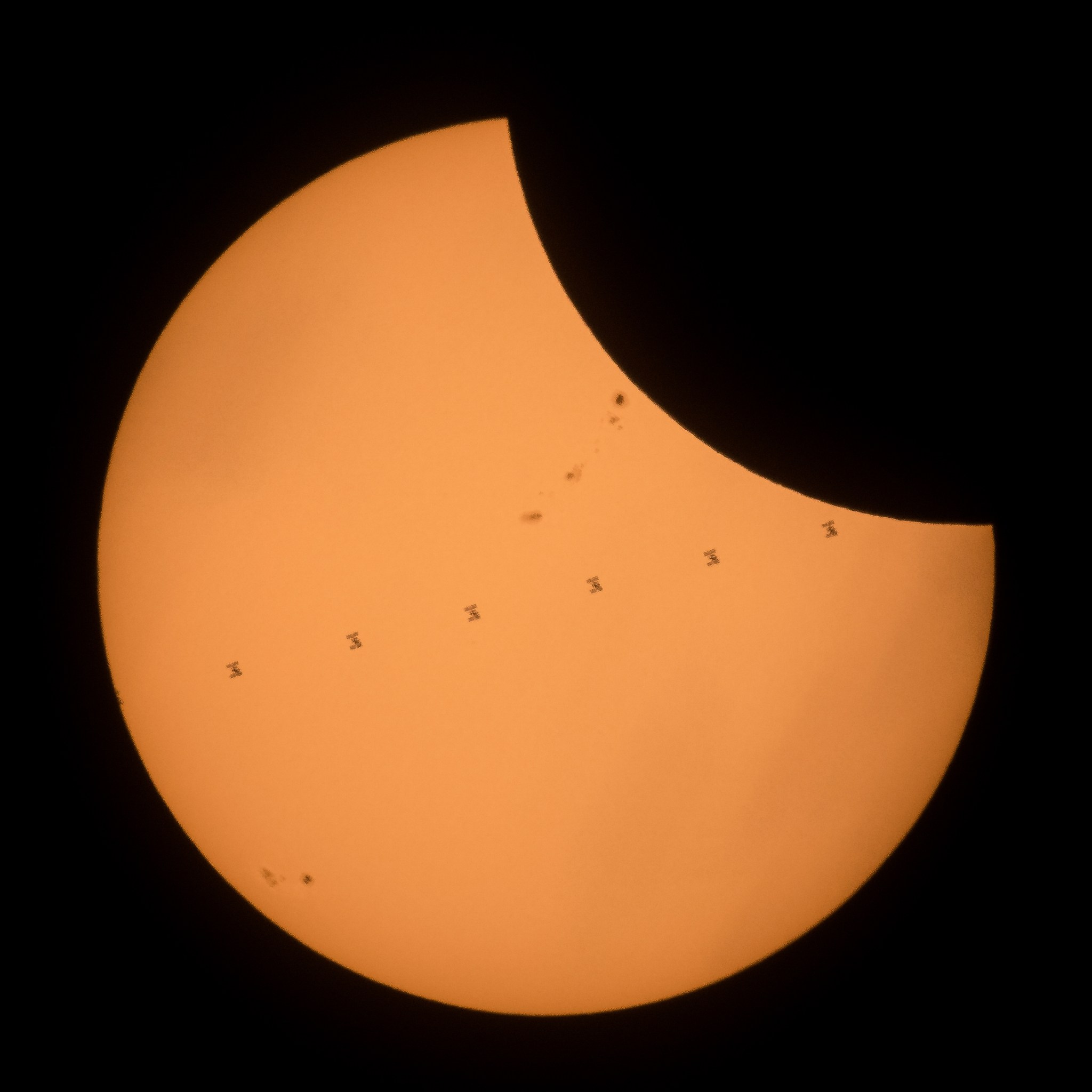
This composite image, made from seven frames, shows the International Space Station, with a crew of six onboard, as it transits the sun at roughly 5 miles per second during a partial solar eclipse, Aug. 21 near Banner, Wyoming. A total solar eclipse swept across a narrow portion of the United States from Lincoln Beach, Oregon to Charleston, South Carolina. (NASA/Joel Kowsky)
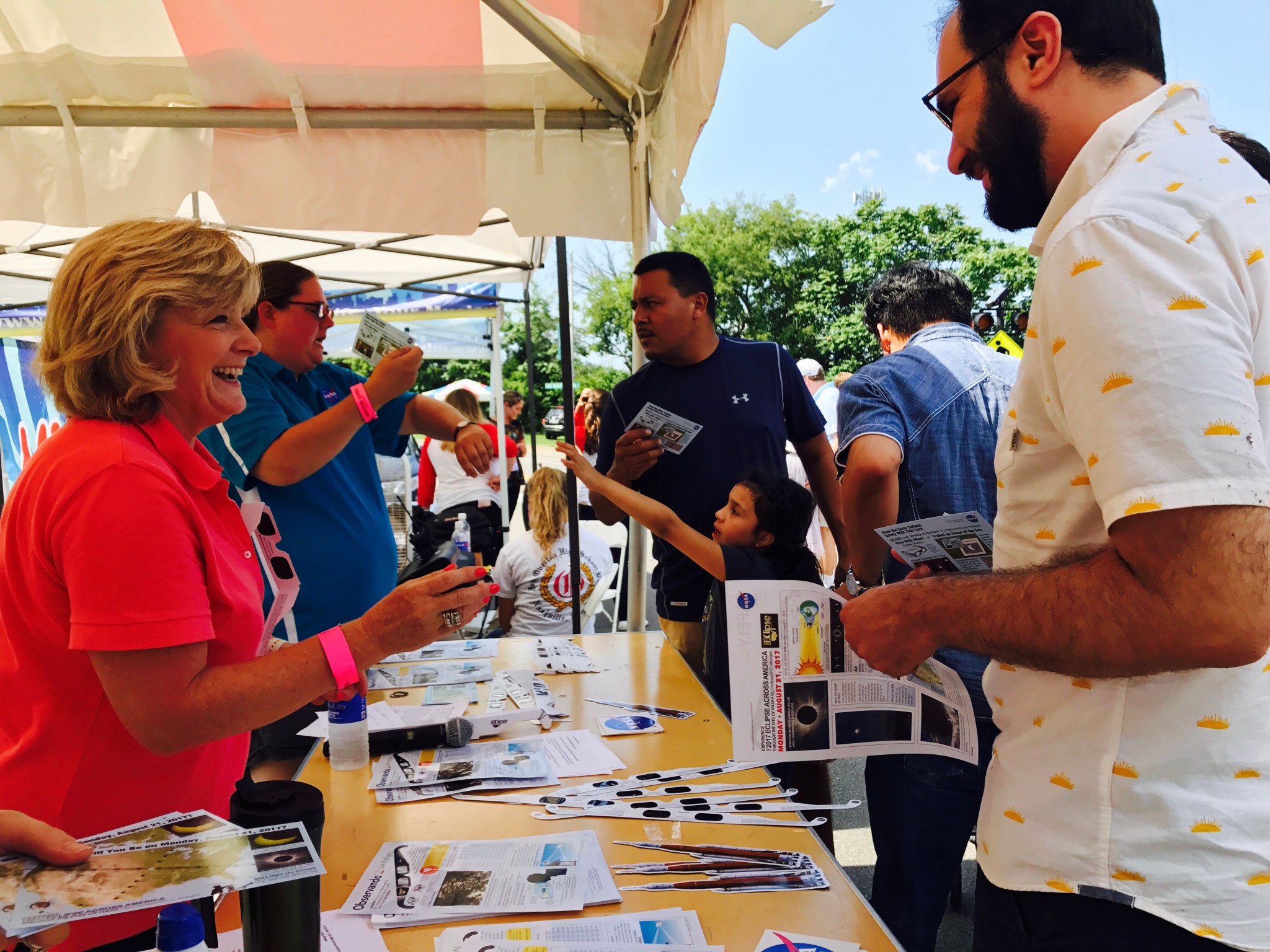
Marshall Deputy Director Jody Singer, left, greets visitors under a tent at the Adventure Science Center in Nashville, Tennessee, Aug. 21 during the “2017 Eclipse Across America” festivities. Singer spoke to a large crowd gathered at the science center shortly before the total solar eclipse in Nashville, which was the largest city in the path of totality. (NASA/Genna Duberstein)
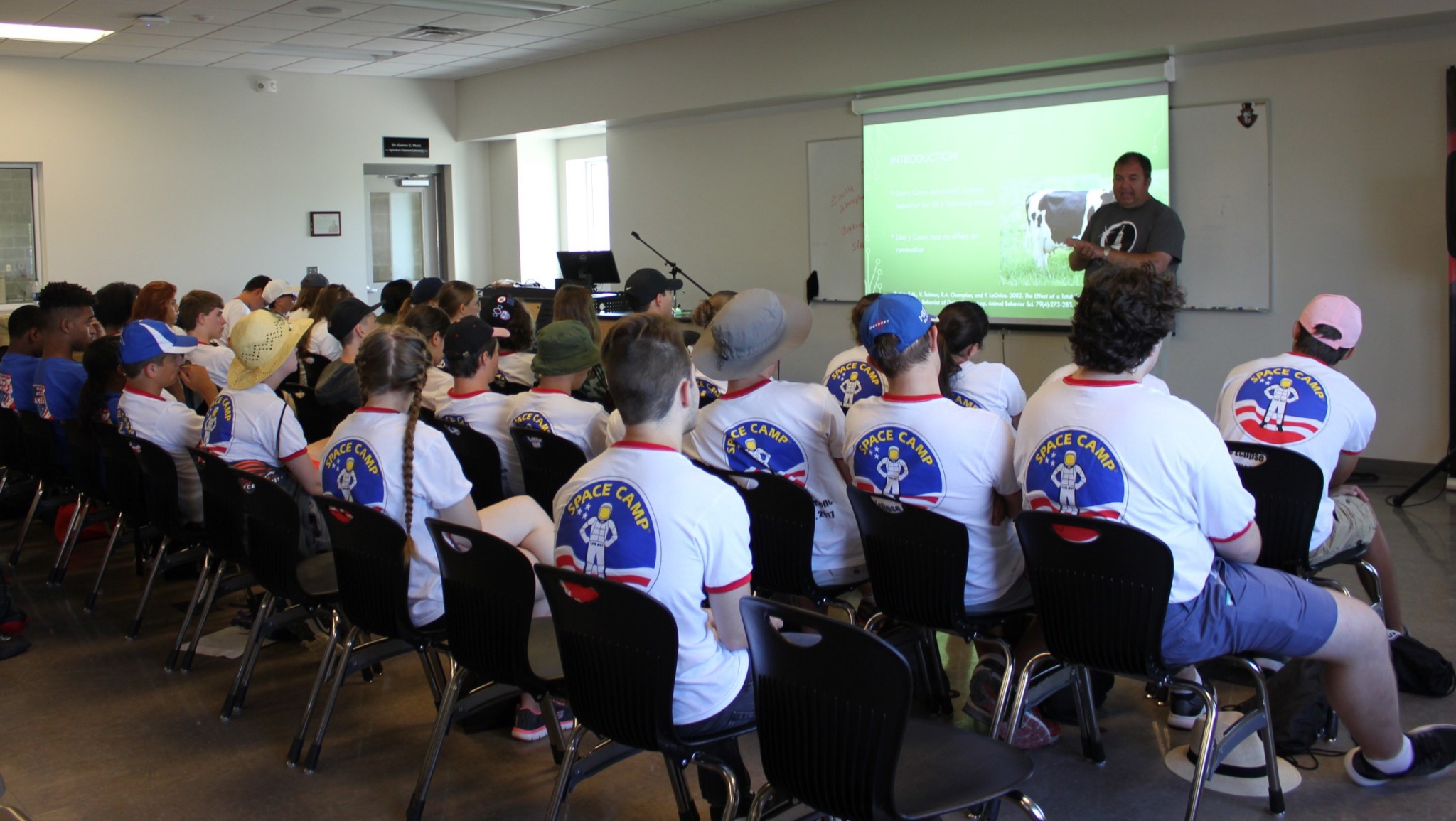
Rod Mills, associate professor of agriculture at Austin Peay State University in Clarksville, Tennessee, speaks to a group of students from the U.S. Space & Rocket Center Aug. 21 in Clarksville — hours before a total solar eclipse passed through the area. In Clarksville, Marshall astrophysicist Mitzi Adams and other NASA experts worked with Austin Peay’s Department of Physics and Astronomy to inspire and educate students from the U.S. Space & Rocket Center, NASA’s INSPIRE Project and the University of Alabama in Huntsville. (MSFC)
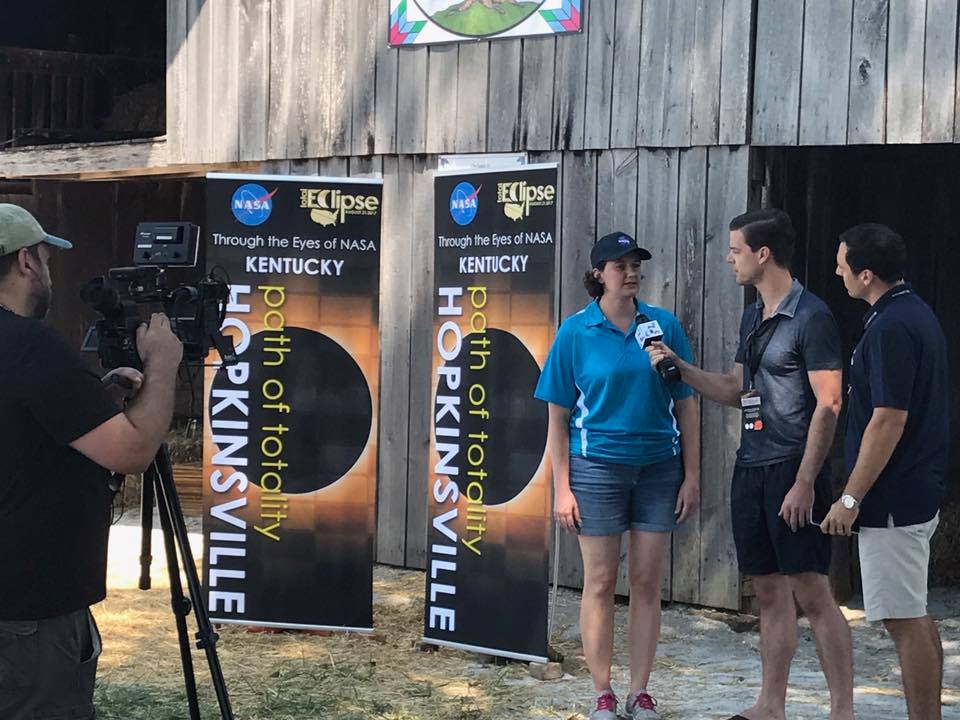
Marshall planetary scientist Renee Weber, center, interviewed Aug. 20 by TV news reporters during eclipse-viewing festivities near Hopkinsville, Kentucky, was among the numerous NASA researchers who conducted scientific studies during the eclipse. Weber also served as a NASA subject-matter expert during the “Eclipse Across America: Through the Eyes of NASA” live programming seen by millions on NASA TV and CNN. Marshall teams supported the event at key points across the Southeast, including viewing locations in Kentucky, Tennessee and Missouri. (NASA/MSFC/Shannon Ridinger)
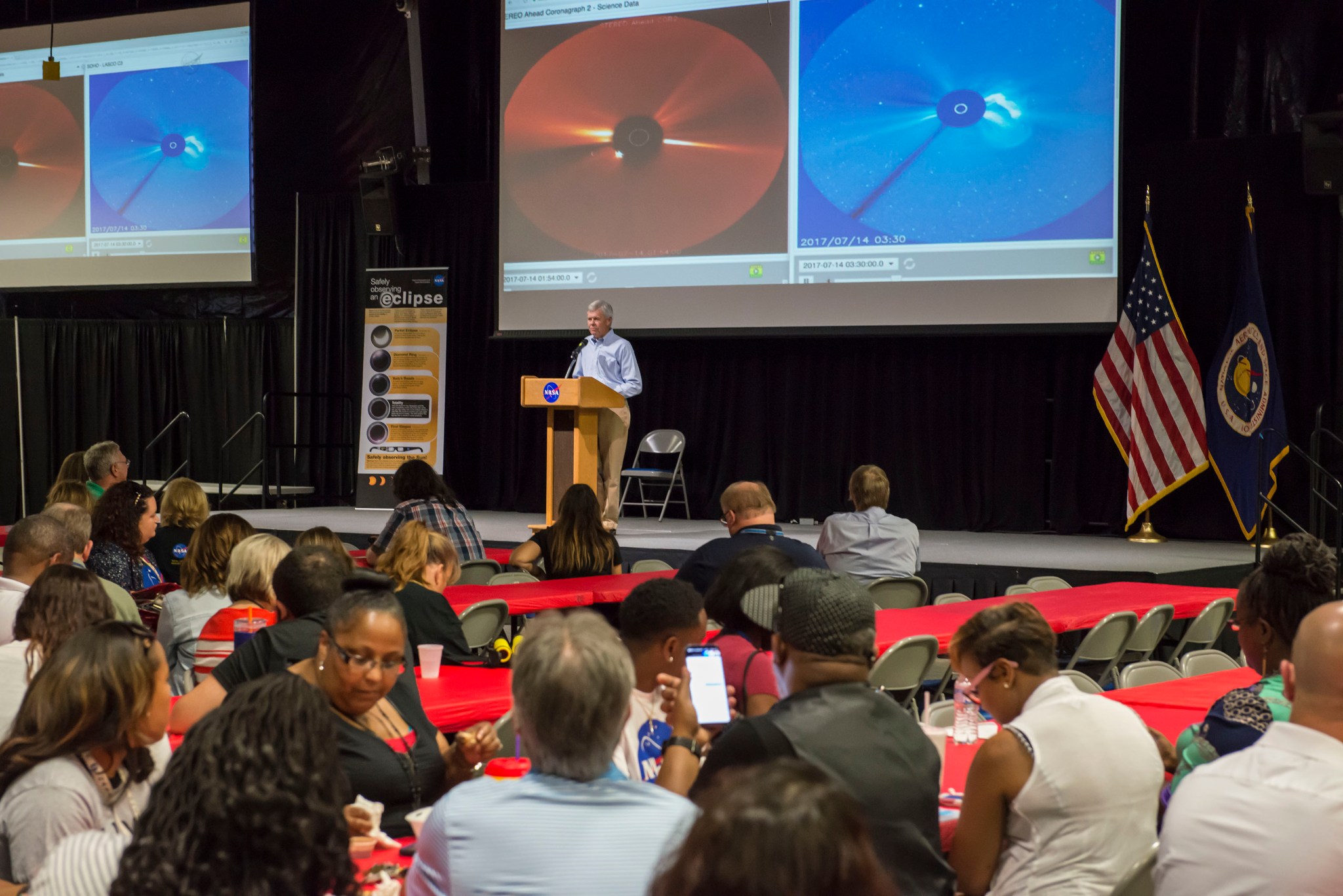
Former Spacelab 1 mission scientist Rick Chappell addresses Marshall team members during the Aug. 21 eclipse-watching event in Activities Building 4316. Chappell, a former associate director for science at Marshall and now a physics professor at Vanderbilt University in Nashville, joined a throng of Marshall personnel to marvel at the eclipse. (NASA/MSFC/Fred Deaton)
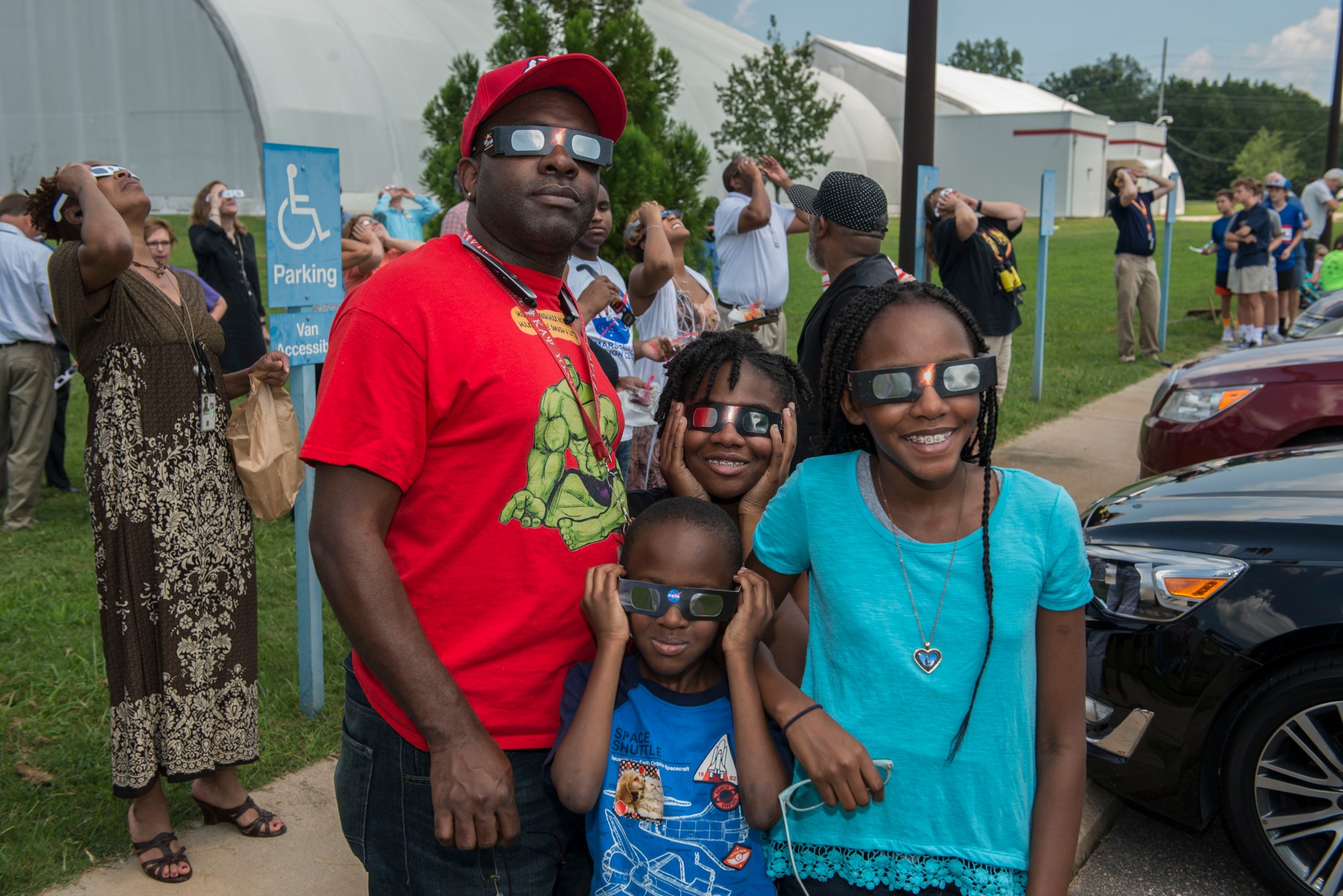
Sylvester Dorsey III, avionics lead for the Europa Deorbit Stage Team in Marshall’s Engineering Directorate, is joined during Marshall’s eclipse-viewing event by his three children, from left, Sylvester IV, Sidney and Sakari. Though Huntsville was south of the path of totality, the Dorseys were among those awestruck by the natural phenomenon. The Huntsville area experienced 97 percent occultation, nearly a complete blocking out of the sun by the orbit of Earth’s moon. The next opportunity to view a solar eclipse in the eastern and central United States will occur in April 2024. (NASA/MSFC/Fred Deaton)
News media turned out in droves to cover NASA’s cross-country eclipse events. Here, media members set up television cameras near Hopkinsville, Kentucky, where Marshall scientists and spokespersons were interviewed throughout the day’s activities. (NASA/MSFC/Mick Speer)
Space Station Crew Discusses Life in Space with NASA’s New Class of Astronauts
NASA astronauts Peggy Whitson, Jack Fischer and Randy Bresnik took time out of their busy schedules on the International Space Station for a question-and-answer session with NASA’s new class of astronauts. The in-flight “orientation” session with the 12 new astronauts was held Aug. 22. (NASA)
SHIIVER Tank Arrives at Marshall for Spray-On Foam Insulation
By Amanda M. Adams
A technical challenge NASA is working to solve is how to maintain very cold liquid propellants to be used as fuel for deep-space missions. Heat intercept concepts such as advanced insulation blankets, foam insulation and vapor-based cooling will be evaluated with the Structural Heat Intercept Insulation Vibration Evaluation Rig, or SHIIVER, which arrived Aug. 10 at NASA’s Marshall Space Flight Center for application of its first round of insulation.
“We need to get to a point where we can preserve cryogenic liquid propellants for months to enable higher-performing systems for deep-space travel. The state-of-the-art, on-orbit storage of a liquid hydrogen tank is a few hours, meeting our current needs for low-Earth orbit. We will need much more capable systems for deep-space travel,” said Arthur Werkheiser, Marshall integration manager for the Evolvable Cryogenics Project, or eCryo, a collaborative project between Marshall and NASA’s Glenn Research Center. SHIIVER is responsible for testing technologies to extend the storage time of these propellants in a cold enough environment to remain liquids that are usable as fuels. The tank was manufactured by Didion’s Mechanical in Bellevue, Ohio, and is managed by the eCryo project.
Cryogenic propellants are gases such as hydrogen, that when chilled to subfreezing temperatures and condensed, form highly combustible liquids that can be used to propel space vehicles. Any introduction of heat, including heat radiating from a test stand, can raise the temperature of the propellants and cause them to boil. In normal upper-stage operations, boil-off is considered lost propellant because it must be vented from the vehicle to prevent the tank from over-pressurizing.
“If you want to get to Mars, you must prevent boil-off, or when you get there, you won’t have enough fuel left to get back,” said Werkheiser.
Until now, boil-off hasn’t been a problem because the space shuttle and Apollo missions only needed to retain cryogenic propellants in flight for minutes or hours instead of the months or years that will be required for deep-space missions.
While at Marshall, the tank will have sensors installed to measure the heat that gets into the tank. The team will then apply spray-on foam insulation, or SOFI, to the 13-foot-long tank in Marshall’s Thermal Protection System Facility. A rotisserie-style fixture allows for even spraying of large objects. Following SOFI trimming, the tank will undergo a white-light scan to measure its final dimensions to assist with eventual multi-layer insulation application. That application, along with the spray-on foam insulation, will reduce future propellant storage tank heat leak while on the launch pad, where it is subject to atmospheric temperature and pressure conditions.
“Glenn and Marshall share expertise in cryogenics and have worked on several of these projects together,” said Lauren Ameen, eCryo testing and validation cost account manager and SHIIVER deputy lead engineer at Glenn. “We are looking to develop cryogenic fluid management technologies that can be used in a future in-space cryogenic stage.”
After the spray-on foam insulation application, the tank will travel to NASA’s Plum Brook Station in Sandusky, Ohio, which is managed by Glenn, for assembly, integration and testing in the B2 test chamber. The assembly will first undergo thermal vacuum testing with only SOFI on the tank surface. This will be the baseline heat load from which to assess future improvements. Then the tank will be insulated on the top and bottom domes with a multi-layer-insulation application over the layer of SOFI and will undergo further cryogenic testing.
When the eCryo project testing is complete, the SHIIVER test tank will be retained as an asset for NASA that can be used for future cryogenic testing needs.
The eCryo project is led by Glenn, managed by the Technology Demonstration Missions Program and sponsored by NASA’s Space Technology Mission Directorate.
For video footage of the SHIIVER tank and arrival at Marshall, click here.
Adams, an ASRC Federal/Analytical Services employee, supports the Office of Strategic Analysis & Communications.
Marshall Engineer Tal Wammen Awarded Fulbright Scholarship
By Susan Barber
Tal Wammen, an engineer in the Propulsion Test branch at NASA’s Marshall Space Flight Center, has earned a prestigious Fulbright scholarship and will begin a research position at the von Karman Institute for Fluid Dynamics in Brussels, Belgium, as a Fulbright Scholar September 2017.
The Fulbright scholarship is a merit-based scholarship granted through a research proposal given to the von Karman Institute, a non-profit research institution. Students from all over the world come to the institute each year to study fluid dynamics and gain knowledge while doing a work placement in a specific area.
“I have always wanted to pursue an international research project of some kind, so I read more about the Fulbright Program online and began developing a proposal that would allow me to perform research in the field of high-speed aerodynamics in an international setting,” said Wammen. “I believe it will allow me to see engineering and technical problem solving from a different point of view, while also building my soft skills such as communication, teamwork and collaboration.”
Wammen believes what set his proposal apart from other competitors for the scholarship was that he will be studying high-speed fluid dynamics using a facility known as the Longshot Hypersonic Wind Tunnel. Unlike a typical wind tunnel that uses fans to create a flow field, the Longshot uses a set of reservoirs pumped to extremely high pressures to drive a piston down a tube, which accelerates the flow through a hypersonic nozzle. Hypersonics are currently of high interest to the aerospace industry, so the opportunity to take part in cutting- edge research on this topic is a tremendous opportunity for the Marshall engineer.
“These test facilities produce extremely high flows, some reaching almost 15 times the speed of sound,” Wammen said. “We use high-pressure test facilities of similar caliber at Marshall to those found at the von Karman Institute. My main goal at Von Karman is to gain additional experimental testing and numerical modeling experience.”
Wammen earned his bachelor’s degree in civil engineering from the University of Wyoming in 2013, and his master’s degree in mechanical engineering from the University of Alabama Huntsville in 2016. He began his NASA career as a spring intern at Marshall in 2010 and joined Marshall full time as a co-op student after completing his undergraduate degree. Wammen works in the SLS core stage testing in the West Test Area, along with some small-scale propulsion testing in the test cells in the East Test Area.
When he returns to NASA from the Von Karman Institute, he plans to pursue his professional engineering license. “Working in an international environment will give me a different perspective, specifically in test engineering,” said Wammen. “I’m honored to be able to further my education at the institute. I hope one day to pursue a doctoral degree, and this scholarship will give me the experience I need to reach that goal, and to continue to apply what I learn here at Marshall.
Barber, a 2017 summer intern, supports the Office of Strategic Analysis & Communications.
Safety Week 2017: Reporting Our Concerns is ‘Everyone’s Obligation’
By Rick Smith
Editor’s Note: NASA’s Marshall Space Flight Center will hold its first Safety Week celebration Sept. 25-29, with each day focused on a unique theme tied to team members’ health and well-being. In coming weeks, articles on each day’s theme and planned activities and presentations will appear in the Marshall Star.
Marshall’s Safety Week 2017 will open Sept. 25 with “Reporting Monday,” the theme for the week’s opening day, which focuses on the obligation to report unsafe conditions or situations. All presentations and training opportunities for the day will be organized around that topic.
“Vigilance is our first line of defense, and reporting unsafe conditions or situations is everyone’s obligation,” said Rick Burt, director of Marshall’s Safety and Mission Assurance Directorate. “It’s not about getting anyone in trouble. It’s about being sure that everyone goes home safely at the end of the day.”
Kicking off Safety Week will be noted journalist and author Rick Bragg, who will take the stage at 10:30 a.m. in Morris Auditorium in Building 4200, followed by a meet-and-greet session in the 4200 lobby. A native of Piedmont, Alabama, Bragg teaches journalism at the University of Alabama in Tuscaloosa. He is the author of six bestselling nonfiction books, won the Pulitzer Prize in 1996 for his reporting for The New York Times, and twice received the American Society of Newspaper Editors’ Distinguished Writing Awards.
From 1-2 p.m., team members can take part in a special telecourse on “Safety, Health and Environmental Reporting Made Easier,” presented by the Safety and Mission Assurance Directorate. The course will concentrate on both the NASA Mishap Information System and the Safety Concerns Reporting System, which have been updated to enable users to more easily and quickly report safety issues or concerns centerwide. Additional “Who to Call” information will be provided to participants to further improve their ability to promptly report safety concerns.
Schedule of Safety Week Events: “Reporting Monday,” Sept. 25
- Safety Culture Training — Available beginning 9 a.m.
- Kickoff Speaker: Rick Bragg — 10:30-11:30 a.m.
- Speaker Meet-and-Greet — 11:30 a.m.-noon
- Organizational Meetings — 1-2 p.m.
- QD12 Presentation: SHE Reporting Made Easier — 1-2 p.m.
- Dedicated Housekeeping — 2-3 p.m.
In coming weeks, team members will be invited to sign up for the telecourse, which will be held in buildings 4203, 4600, 4708, Marshall’s test area and the National Space Science and Technology Center in Huntsville.
Marshall organizations are also encouraged to hold their own safety meetings to discuss topics unique to their area or mission. Organizations can request a safety roadshow presentation, delivered by a trained Safety and Mission Assurance Directorate representative, by contacting Sheryl Kittredge, the directorate’s associate director for program assurance. Each Marshall organization is encouraged to hold one team safety session during Safety Week.
Employees and contractors also may visit SATERN at the start of Safety Week to take the safety refresher course “Orientation to NASA Safety Culture.” For those in leadership roles, the course “Safety Culture for Supervisors” will be offered. A direct link to the approximately 45-minute training module will be emailed to team members by Safety Week organizers in coming weeks.
Blocks of time are set aside each day from 2-3 p.m. for individuals to assess their respective offices, laboratories and shops for housekeeping concerns. Everyone is encouraged to use this flexible schedule to choose a day to conduct safety-minded housekeeping within their area.
Burt said such opportunities drive home another key element of Marshall’s safety culture. “Attending to one’s personal safety is vital, but taking ownership means being responsible for the safety of others — having our coworkers’ backs,” he said. “That’s doubly beneficial, fostering pride and loyalty as well as safety-mindedness.”
Burt hopes Safety Week will reinforce that team spirit, already so evident in Marshall workers, and help to further the center’s “Incident and Injury Free” safety initiative.
“I want people to come away from Safety Week confident that Marshall cares about our mutual safety,” he said. “Not in some perfunctory manner, but personally and profoundly. Caring for each other underpins everything we do.”
Safety Week is organized by Marshall’s Office of Center Operations and the Safety and Mission Assurance Directorate. Team members are encouraged to monitor ExplorNet for updates, signup opportunities for the Safety, Health and Environmental training course and additional details about activities scheduled throughout the week.
Smith, an ASRC Federal/Analytical Services employee, supports the Office of Strategic Analysis & Communications.
Apollo 13 Lunar Module Pilot Fred Haise to Speak at Marshall Sept. 28
Former NASA astronaut Fred Haise Jr., part of the three-man Apollo 13 crew whose plight and courage caught the world’s attention in April 1970, will address NASA’s Marshall Space Flight Center team members Sept. 28.
Haise’s speech, part of Marshall’s “Mission Success is in Our Hands” lecture series, will be at 10 a.m. in Morris Auditorium in Building 4200. His presentation, a highlight of Marshall’s Safety Week 2017 activities, will be followed by a reception in the 4200 lobby.
Information about Haise’s speech will be updated on ExplorNet as it becomes available.
Haise, the lunar module pilot for Apollo 13, and fellow astronauts James Lovell and John Swigert were forced to abort a planned moon landing when an oxygen system failure threatened their mission and lives. Aided by quick-thinking NASA teams back home, the trio converted their lunar module into a makeshift lifeboat and safely returned to Earth. Their experience was dramatized in the Oscar-winning 1995 film “Apollo 13.”
A Biloxi, Mississippi, native, Haise served as a fighter pilot for the U.S. Marine Corps and a test pilot for the U.S. Navy. He became a research pilot for NASA in 1959, and was selected to join the astronaut corps in 1966. He was backup lunar module pilot for Apollo 8 and Apollo 11, and backup spacecraft commander for Apollo 16. He retired from NASA in 1979.
Marshall Retirees Association Encourages Retiring Employees to Join
The Marshall Retirees Association is Encouraging NASA Marshall Space Flight Center employees who plan to retire soon to join the organization.
New retirees are automatically offered a free membership for the remainder of the year in which they retire. Membership in the association is $30 per year and open to all former NASA employees, including those who have worked for NASA and gone on to work in other industries.
The Marshall Retirees Association was established to preserve the Marshall Center team legacy and to share the vision of space exploration with future generations. The association promotes community interest in Marshall activities, sponsors or participates in community events and offers Marshall Speakers Bureau access for schools, community organizations, the U.S. Space & Rocket Center and the Marshall Center.
The association also provides scholarships for deserving engineering students, serves as an information source on the history and accomplishments of Marshall, provides corporate knowledge for historical data or future planning and provides a vast cross-section of skills, experience and knowledge of operational assistance to NASA.
For more information, contact Mary Spaulding, the association’s membership chairman, at md_spaulding@comcast.net or 256-883-2228.
This Week in NASA History: STS-105 Lands – Aug. 22, 2001
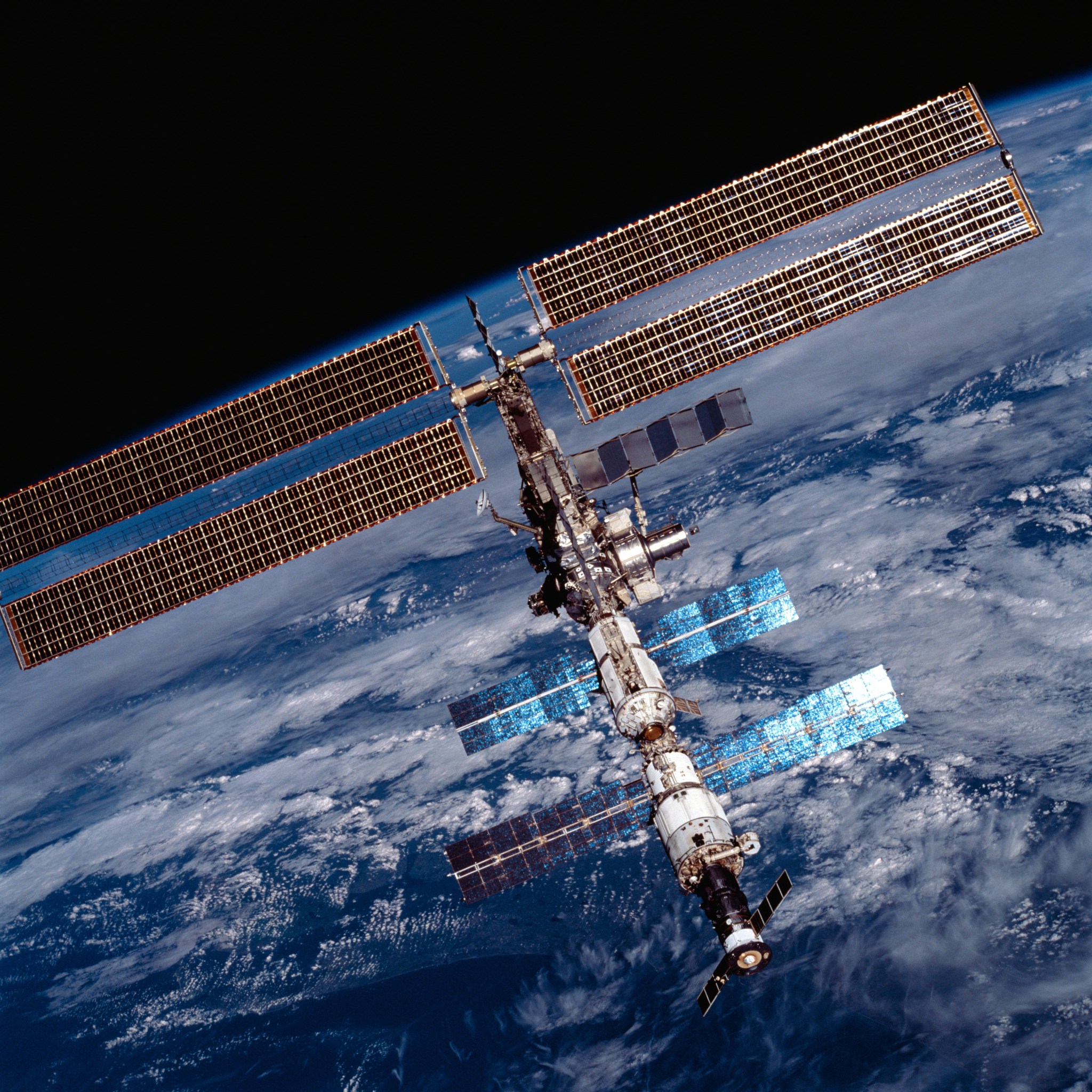
This week in 2001, space shuttle Discovery and STS-105 landed at NASA’s Kennedy Space Center following a successful 12-day mission to the International Space Station. This was the 11th space station assembly flight. The goals of STS-105 were rotating the Expedition Two crew with the Expedition Three crew and delivering supplies using the Italian-built Multipurpose Logistics Module, Leonardo. Here, the STS-105 crew departs the orbiting laboratory. Today, the Payload Operations Integration Center at Marshall serves as “science central” for the space station, working 24/7, 365 days a year in support of the orbiting laboratory’s scientific experiments. The NASA History Program is responsible for generating, disseminating and preserving NASA’s remarkable history and providing a comprehensive understanding of the institutional, cultural, social, political, economic, technological and scientific aspects of NASA’s activities in aeronautics and space. For more pictures like this one and to connect to NASA’s history, visit the Marshall History Program’s webpage. (NASA)
Obituaries
Rita S. Keith, 64, of Huntsville, died Aug. 10. She retired from the Marshall Center in 2006 as a management support assistant. She is survived by her husband, Joe Keith.
Albert E. Gresham, 96, of Huntsville, died Aug. 11. He retired from the Marshall Center in 1973 as an engineer.
Rita Evans-McCoy, 62, of Meridianville, Alabama, died Aug. 13. She retired from the Marshall Center in 2010 as a human resources specialist. She is survived by her husband, Julius McCoy.
Linwood Watts, 76, of Huntsville, died Aug. 13. He retired from the Marshall Center in 2003 as an electronic instrumentation assistant. He is survived by his wife, Cheryl D. Watts.






